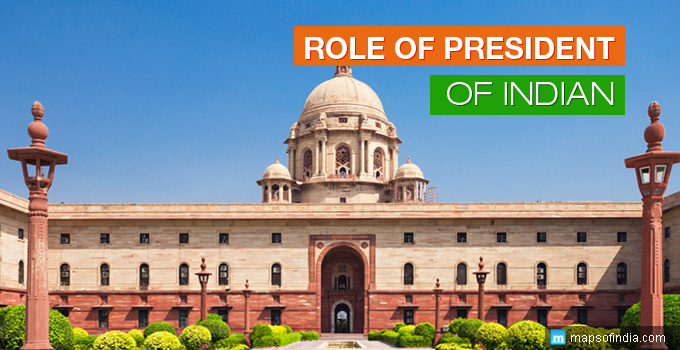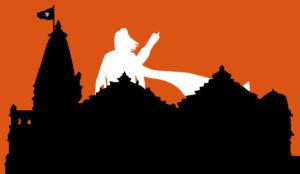Functions of Indian President – As the head of the state, the President of India is the highest-ranking constitutional authority and a symbol of unity and integrity of the nation. The position of the President of India is similar to the head of state in other parliamentary democracies. The Constitution of India provides extensive powers and functions to the President, including both ceremonial and executive roles. In this article, we will delve into the functions of the Indian President, his roles, powers, and responsibilities.
Introduction
The President of India is the first citizen of the country and occupies the highest office of the land. The position of the President of India is the apex of the Indian constitutional system. The Constitution of India confers a range of powers and responsibilities to the President, making him the most important constitutional functionary. The President’s functions can be classified into ceremonial, executive, legislative, and financial roles.
Ceremonial Role
The President of India is the ceremonial head of the state and performs many ceremonial functions. Some of these functions are:
1. Chief Guest at Republic Day Parade
The President of India is the Chief Guest at the Republic Day parade held in New Delhi every year on 26th January.
2. Hosting State Banquets
The President hosts state banquets for foreign heads of state and other dignitaries.
3. Presenting Awards
The President of India presents various awards such as Bharat Ratna, Padma Vibhushan, Padma Bhushan, and Padma Shri, to individuals who have made significant contributions in their respective fields.
4. Receiving Foreign Dignitaries
The President of India receives foreign dignitaries and heads of state who visit India.
Executive Role
The President of India is the head of the executive branch of the government. The President’s executive role includes the following:
1. Appointment of Prime Minister
The President of India appoints the Prime Minister of India, who is the head of the Council of Ministers.
2. Appointment of Other Ministers
The President of India appoints other ministers on the advice of the Prime Minister.
3. Appointment of Governors
The President of India appoints the Governors of the states on the advice of the Prime Minister.
4. Summoning and Proroguing Parliament
The President of India has the power to summon and prorogue both the Houses of Parliament.
5. Addressing the Nation
The President of India addresses the nation on various occasions such as Republic Day, Independence Day, and on the eve of Gandhi Jayanti.
Legislative Role
The President of India also plays an important role in the legislative process. The President’s legislative role includes the following:
1. Giving Assent to Bills
The President of India gives his assent to bills passed by the Parliament, which then become laws.
2. Returning Bills for Reconsideration
The President of India can return a bill for reconsideration to the Parliament.
3. Summoning Joint Session of Parliament
If a bill is passed by one House of Parliament and rejected by the other, the President can summon a joint session of both Houses to resolve the deadlock.
4. Addressing Joint Session of Parliament
The President of India addresses the joint session of both Houses of Parliament at the beginning of the first session after a general election.
Financial Role
The President of India plays an important role in the financial matters of the country. The President’s financial role includes the following:
1. Promulgation of Ordinances
The President of India has the power to promulgate ordinances when Parliament is not in session.
2. Making Recommendations for the Budget
The President of India makes recommendations for the budget to be presented in the Parliament.
3. Appointing Finance Commission
The President of India appoints the Finance Commission, which recommends the distribution of taxes between the Union and State Governments.
Powers of the President
Apart from the functions and roles mentioned above, the President of India also has certain powers. Some of these powers are:
1. Veto Power
The President of India can veto a bill passed by the Parliament.
2. Pardoning Power
The President of India has the power to pardon or commute the sentence of a person convicted of an offence.
3. Emergency Powers
The President of India has emergency powers, which can be used in case of a threat to the nation’s security or stability.
4. Diplomatic Powers
The President of India is the chief diplomat of the country and has the power to make treaties and appoint ambassadors.
Conclusion
The President of India is the head of the state and performs many important functions and roles. From ceremonial duties to executive, legislative, and financial roles, the President has significant powers and responsibilities. The position of the President is vital to the Indian constitutional system, and the President acts as a guardian of the Constitution. In conclusion, the President of India is a crucial figure in the Indian democratic setup.
FAQs
- What is the tenure of the President of India?
The President of India is elected for a term of five years and can be re-elected.
- Who can be elected as the President of India?
Any Indian citizen who is above 35 years of age and meets other qualifications specified by the Constitution can be elected as the President of India.
- Can the President of India be impeached?
Yes, the President of India can be impeached for violation of the Constitution.
- What is the order of precedence in India?
The President of India is the highest-ranking constitutional functionary in India, followed by the Vice President and the Prime Minister.
- Is the President of India involved in the day-to-day functioning of the government?
No, the President of India is not involved in the day-to-day functioning of the government. The President’s role is primarily ceremonial and constitutional.




